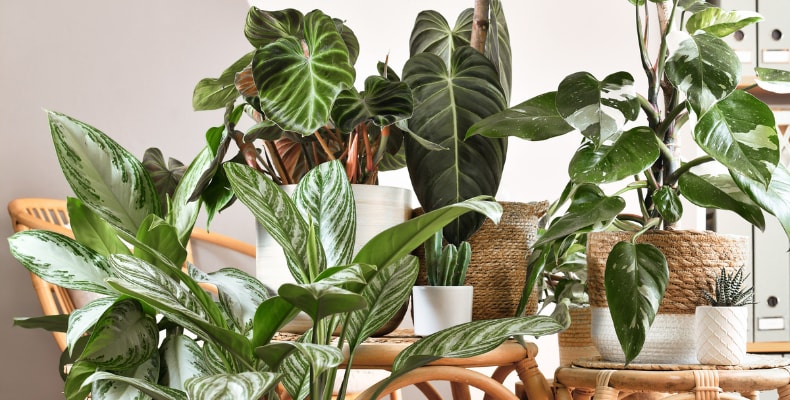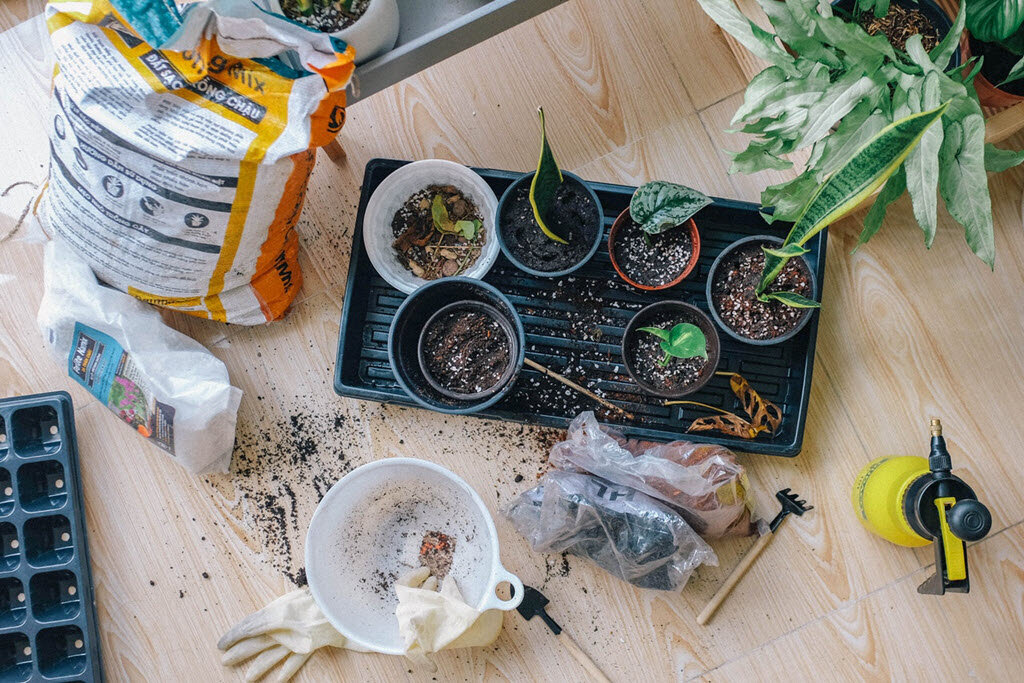blog
The Best Tools for Indoor Gardening Projects
Indoor gardening has become an increasingly popular hobby for people looking to bring a touch of nature into their homes, especially for those without access to outdoor space. Whether you’re a seasoned gardener or a beginner, having the right tools for indoor gardening is essential for ensuring that your plants thrive. In this guide, we will explore the best tools for indoor gardening projects, helping you create a beautiful and healthy indoor garden. From essential tools like watering cans to more specialized tools like grow lights and pruning shears, we will cover all the must-have gardening tools that can make your indoor gardening projects a success.
1. Pruning Shears for Indoor Plants
Pruning is a crucial aspect of indoor gardening. It helps to maintain the health and appearance of your plants by removing dead or damaged foliage and promoting new growth. A good pair of pruning shears is essential for this task. When choosing pruning shears for indoor gardening, it’s important to select tools that are both sharp and precise to ensure clean cuts that won’t damage your plants.
Bypass pruning shears are the most commonly used for indoor plants. They have two sharp blades that pass each other like scissors, making them ideal for cutting through softer stems and branches. These shears are perfect for trimming houseplants, flowers, and herbs. For tougher, woodier plants, you might want to consider anvil pruning shears, which have one sharp blade that cuts against a flat surface. These are particularly useful for trimming branches on larger indoor trees or shrubs.
When selecting pruning shears, consider the following:
- Ergonomics: Look for shears with comfortable, padded handles that reduce hand strain, especially if you’re doing a lot of pruning.
- Size: Small pruning shears are easier to handle and perfect for smaller indoor plants, while larger ones may be necessary for larger plants or trees.
- Quality: Invest in a high-quality pair to ensure that they stay sharp for longer and provide clean cuts.
Tip: Always clean your pruning shears after each use to prevent the spread of diseases between plants. Regularly sharpen the blades to maintain cutting efficiency.

2. Watering Can
Watering is one of the most important tasks in indoor gardening, and having the right watering can makes all the difference. When selecting a watering can for indoor plants, you’ll want to consider the size, spout design, and material.
Size: A watering can that holds 1 to 2 liters of water is typically perfect for indoor gardening. Larger cans might be difficult to maneuver in smaller indoor spaces, while smaller ones may require frequent refilling.
Spout Design: The spout of the watering can should be long and narrow, allowing for precise watering. A long spout helps to direct the water directly to the base of the plant, reducing the chances of overwatering the leaves, which can lead to mold and mildew growth. The spout should also be adjustable, allowing you to control the flow of water.
Material: Watering cans are available in various materials, including plastic, metal, and ceramic. Plastic cans are lightweight and durable, while metal cans often have a more aesthetic appeal. Ceramic watering cans can add a decorative touch to your indoor garden but may be heavier than other materials.
If you’re growing plants with delicate needs, such as succulents, cacti, or orchids, you may want to use a watering can with a fine rose nozzle, which produces a gentle rain-like effect. This allows you to water your plants without disturbing their roots or damaging the leaves.
Tip: Always ensure that your watering can has good drainage. Overwatering is one of the most common mistakes in indoor gardening, so it’s important to water only when the soil is dry to the touch.
3. Grow Lights
One of the biggest challenges of indoor gardening is ensuring that your plants receive enough light. Most indoor plants need adequate light to thrive, and natural sunlight may not always be sufficient, especially in the winter months or in areas with limited natural light. This is where grow lights come into play.
Fluorescent Lights: Fluorescent grow lights are energy-efficient and affordable. They are best suited for plants that need light for prolonged periods, such as herbs and leafy greens. These lights emit a cool spectrum of light that encourages lush, leafy growth. They are ideal for small plants and can be easily mounted above your indoor garden.
LED Grow Lights: LED lights have become the go-to option for indoor gardening because of their energy efficiency and versatility. They are available in a full spectrum of light, providing all the wavelengths plants need for photosynthesis. LED lights are perfect for a wide range of indoor plants, from leafy greens to flowering plants. Additionally, they produce minimal heat, which helps prevent overheating your plants.
Incandescent Grow Lights: While less common, incandescent bulbs can also be used for indoor gardening. They provide a warm spectrum of light that is particularly beneficial for flowering plants, as they encourage blooming and fruiting. However, they do produce more heat than fluorescent or LED lights, which may require careful positioning to avoid damaging your plants.
When selecting grow lights, consider factors like the size of your indoor garden, the types of plants you’re growing, and the amount of light your plants need. Grow lights that come with adjustable arms or hanging fixtures allow you to adjust the light intensity and distance from the plants, giving you more control over their growth.
Tip: To ensure even lighting, rotate your plants regularly to prevent them from leaning toward the light source.
4. Soil Moisture Meter
Watering your indoor plants properly is essential to their growth, and a soil moisture meter is a tool that can help you avoid overwatering or underwatering. This tool measures the moisture levels in the soil and provides you with a reading that tells you when it’s time to water your plants.
A digital moisture meter is a great choice for indoor gardening. It provides an accurate reading of the soil moisture and is easy to use. Simply insert the probe into the soil, and the meter will display the moisture level on a screen. Some moisture meters also have additional features, such as pH testing, which can help you monitor the overall health of your plants.
Moisture meters are especially helpful for beginners who may be unsure of when to water their plants. Overwatering is a common mistake, and a moisture meter can help you avoid it by letting you know when the soil is dry enough to warrant watering.
Tip: Be sure to clean the probe after each use to avoid transferring any bacteria or fungi between plants.
5. Plant Support Stakes and Trellises
Indoor plants, especially tall or vining plants, may need additional support to grow upright and maintain their shape. Plant support stakes and trellises are essential tools for providing stability to your plants.
For smaller plants, bamboo or metal stakes are perfect for supporting their stems. These stakes can be inserted into the soil near the base of the plant and secured with soft ties to keep the plant upright. For climbing plants, such as tomatoes or ivy, a trellis provides a structure for the plant to climb, keeping it off the ground and helping it grow vertically. Trellises come in a variety of materials, including wood, metal, and plastic, and can be placed in the soil or hung on the wall to maximize space.
For heavier or taller plants, such as indoor trees, you may need larger plant supports, like wooden or metal stakes that can withstand the weight of the plant. These stakes should be placed carefully to avoid damaging the root system.
Tip: Regularly check the supports to ensure that your plants are properly tied and that the supports are not too tight, which could damage the stems.

6. Fertilizer
Fertilizer is an essential tool for providing indoor plants with the nutrients they need to grow strong and healthy. Plants absorb essential nutrients from the soil, but over time, these nutrients can become depleted, especially in containers. Fertilizing your plants regularly ensures that they have access to the necessary nutrients for healthy growth.
Types of Fertilizer: There are several types of fertilizers, including liquid fertilizers, granular fertilizers, and slow-release fertilizers. Liquid fertilizers are fast-acting and can be mixed with water to feed your plants. Granular fertilizers are applied directly to the soil and release nutrients over time. Slow-release fertilizers, often in the form of pellets, provide a steady supply of nutrients for several months.
For indoor plants, it’s best to choose a balanced fertilizer that contains equal amounts of nitrogen (N), phosphorus (P), and potassium (K), the three primary nutrients that plants need. Some fertilizers are specifically formulated for indoor plants, providing additional micronutrients like iron, calcium, and magnesium.
Tip: Always follow the manufacturer’s instructions for application rates to avoid over-fertilizing, which can damage your plants.
Conclusion
Indoor gardening is a wonderful way to bring greenery into your home, and with the right tools, you can ensure that your plants flourish. From pruning shears for maintaining plant health to grow lights for providing essential light, each tool plays a crucial role in the success of your indoor garden. Additionally, tools like watering cans, soil moisture meters, and fertilizers help you provide the optimal care your plants need. By selecting quality tools that suit your specific indoor gardening needs, you can create a thriving and vibrant indoor garden.


